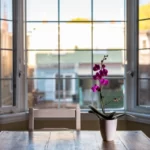Black-Eyed Susans, with their cheerful yellow petals and distinctive dark centers, are a delightful addition to gardens and landscapes. These hardy and vibrant flowers, scientifically known as Rudbeckia hirta, grace outdoor spaces with their beauty and are often celebrated for their resilience. However, as gardeners cultivate these golden blooms, a common query often arises: do rabbits have an appetite for Black-Eyed Susans? In this article, we embark on an exploration of the feeding habits of rabbits and their potential attraction to Black-Eyed Susan plants. Understanding this dynamic can be essential for gardeners seeking to protect their beloved blooms while sharing outdoor spaces with these furry neighbors.
- 10 dormant plant root clusters sent with an inch or two of stem
- Each root will grow into a full sized plant the following season
- Plant a few inches down, soak the soil once, and then they only need rain
- Attracts butterflies and yellow finches galore! Deer resistant
- Blooms profusely in the early summer through the fall
Rabbit Feeding Behavior
Rabbits, with their endearing appearance and gentle demeanor, are herbivorous creatures with a voracious appetite for vegetation. Their feeding behavior is both intriguing and impactful in the context of gardening and agriculture. Here’s an insight into the feeding habits of rabbits:
- Herbivorous Nature: Rabbits are strict herbivores, which means they subsist solely on a plant-based diet. They have evolved to consume a wide range of plant matter, from leaves and stems to bark, buds, and even flowers.
- Selective Palates: While rabbits are known to nibble on various plants, they exhibit preferences for certain types of vegetation. Young, tender shoots and leaves of plants are often favored, as they are more nutrient-rich and easier to digest.
- Factors Influencing Choices: Rabbit feeding behavior can be influenced by factors such as the availability of food, seasonal changes in plant growth, and the presence of other competing herbivores. When more preferred food sources are scarce, rabbits may resort to consuming less favored plants.
Understanding the dietary inclinations of rabbits is pivotal when assessing the likelihood of these herbivores grazing on Black-Eyed Susan plants. By gaining insights into rabbit feeding behavior, gardeners can make informed decisions about safeguarding their blossoms.
Black-Eyed Susans: Overview and Growth
Before diving into the question of whether rabbits feast on Black-Eyed Susans, it’s important to familiarize ourselves with these delightful and iconic garden blooms. Here’s an overview of Black-Eyed Susans, scientifically known as Rudbeckia hirta, and their growth characteristics:
- Botanical Charms: Black-Eyed Susans are members of the Asteraceae family, known for their daisy-like flower heads. These cheerful perennials are renowned for their bright yellow petals and the characteristic dark, central cones that give them their name.
- Hardy Perennials: Black-Eyed Susans are celebrated for their hardiness. They are typically categorized as perennials, meaning they return year after year, and are often valued for their ability to thrive in a variety of soil types and growing conditions.
- Seasonal Stars: These blossoms are stars of the late summer and early fall garden, producing an abundance of blooms that attract pollinators like bees and butterflies. Their sunny appearance makes them a favored choice for both garden beds and wildflower meadows.
- Two (2) large live plants – big, healthy, ready to grow, premium perennial flower plants, 4” to 8” tall plants, in 4” pots. NON-GMO No Neonicotinoids
- This lovely traditional perennial wildflower has bright yellow petals surrounding a dark brown center. They will attract a host of pollinators, holds up well as a cut flower, and will only get bigger and fuller with each year
- Season long blossoms. Black Eyed Susans, also known as Rudbeckia, start blooming in mid-summer but blossom even more as the days get a little cooler. Typically grows to about 2’ to 3’ and is the perfect addition to foundation and landscape plantings
- Grown in the Midwest. Plant in any US Zone. Best for foundation planting and large gardens with room to spread. Grows as a perennial in Zones 3 and warmer. 10x Root Development means these plants grow stronger right from the start
- Careful Packaging. Your fresh plants arrive quickly in our exclusive, eco-friendly, 100% recyclable box. 100% Satisfaction Guarantee. Includes our Clovers Garden copyrighted Quick Start Planting Guide
Do Rabbits Eat Black-Eyed Susans?
Now, let’s address the central question: do rabbits have a taste for Black-Eyed Susan plants, including both the leaves and the vibrant blossoms?
- Foliage Consumption: Rabbits are generally not highly attracted to the foliage of Black-Eyed Susans. These flowers contain compounds that make them less palatable to rabbits compared to some other garden plants. While it’s possible for rabbits to nibble on the leaves, it’s not a common preference.
- Flower Consumption: Rabbits are even less likely to consume the showy flowers of Black-Eyed Susans. The petals of these blooms, with their distinctive appearance, tend to deter rabbits.
It’s important to note that while Black-Eyed Susans are not rabbit’s top culinary choice, the likelihood of rabbit browsing can vary based on factors such as local food availability and the presence of competing food sources. Gardeners who wish to protect their Black-Eyed Susan blooms may consider strategies to deter rabbits or safeguard their plants during vulnerable stages of growth.
Protecting Black-Eyed Susans from Rabbits
Gardeners who cherish their Black-Eyed Susan blooms and aim to prevent rabbit nibbling can implement various protective measures. Here are some effective strategies for safeguarding these vibrant garden stars:
- Fencing: Installing a rabbit-proof fence around your garden area is one of the most reliable methods to deter rabbits. Ensure that the fence extends underground to prevent burrowing. A fence of at least 2 to 3 feet in height can effectively keep rabbits out.
- Repellents: Applying rabbit repellents or deterrents around your Black-Eyed Susans can discourage rabbits from approaching. These products often contain scents or tastes that rabbits find unpleasant, helping to protect your blooms.
- Companion Planting: Planting rabbit-resistant flowers and herbs near your Black-Eyed Susans can create a protective barrier. Rabbits are less likely to approach areas with aromatic and pungent plants like marigolds, rosemary, or lavender.
- Netting or Covers: Using netting or covers, especially during the early growth stages of your Black-Eyed Susans, can physically block rabbits from reaching your plants. Ensure the covers are securely anchored to prevent rabbits from sneaking underneath.
- Garden Design: Elevating your Black-Eyed Susans in raised beds or containers can make them less accessible to rabbits. Additionally, pruning nearby shrubs and tall grasses can reduce hiding spots for rabbits near your garden.
- 𝗦𝗜𝗭𝗘: Each decorative garden fence panel is 17 inches high, and 7-inch stake inserts into the soil for added stability, with a width of 13 inches, there are a total of 10 panels that can be connected to form a length of 10.8 feet. The garden fencing can also be expanded into different shapes according to your specific needs.
- 𝗦𝗧𝗨𝗥𝗗𝗬 𝗔𝗡𝗗 𝗥𝗨𝗦𝗧 𝗥𝗘𝗦𝗜𝗦𝗧𝗔𝗡𝗧: Animal barrier fence is made of high-quality thickened metal wire that is welded together and coated with a paint finish to prevent rusting. It is not easily bent and has strong anti-rust and durability properties, making it able to withstand various weather conditions, including sunlight, rain, and snow, without the need for replacement over long-term use.
- 𝗦𝗠𝗔𝗟𝗟𝗘𝗥 𝗜𝗡𝗧𝗘𝗥𝗩𝗔𝗟𝗦: The 1.44-inch spacing of the no-dig fence is smaller than the gaps in ordinary fences, effectively preventing small pets such as kittens, hamsters, moles, hedgehogs, gophers, and groundhogs from passing through.
- 𝗘𝗔𝗦𝗬 𝗧𝗢 𝗨𝗦𝗘: Dog fence requires no assembly, simply insert the stake into the circular hole between two connecting panels and press down firmly, without the need for any tools, to ensure the fence’s stability. This greatly simplifies the installation process and reduces your workload.
- 𝗩𝗘𝗥𝗦𝗔𝗧𝗜𝗟𝗘 𝗨𝗦𝗘: Fence can be used as a decorative garden fence, flower bed fence, animal barrier fence, outdoor dog fence, temporary fence, roadside barrier, pet fence, no-dig fence, and more. It is also suitable for use in patio, porch, corridor, and balcony. (However, please note that this fence may not prevent large dogs).
Conclusion
Black-Eyed Susans, with their vibrant yellow petals and iconic dark centers, are a garden favorite celebrated for their beauty and resilience. While rabbits may occasionally nibble on the foliage of these blossoms, they are not their preferred food source. The showy flowers and the compounds present in Black-Eyed Susans often serve as natural deterrents.
Gardeners who wish to protect their cherished Black-Eyed Susan blooms from rabbit browsing can employ protective strategies such as fencing, repellents, companion planting, and covers. By taking proactive measures to safeguard their garden treasures, gardeners can continue to enjoy the sunny splendor of Black-Eyed Susans and ensure their thriving presence in the garden landscape.






